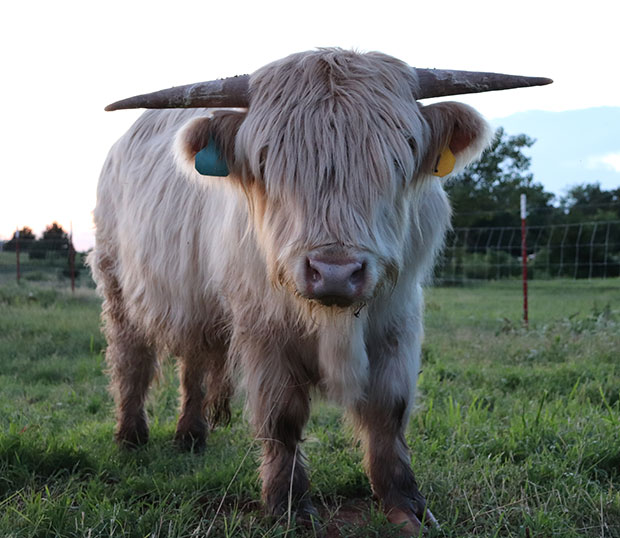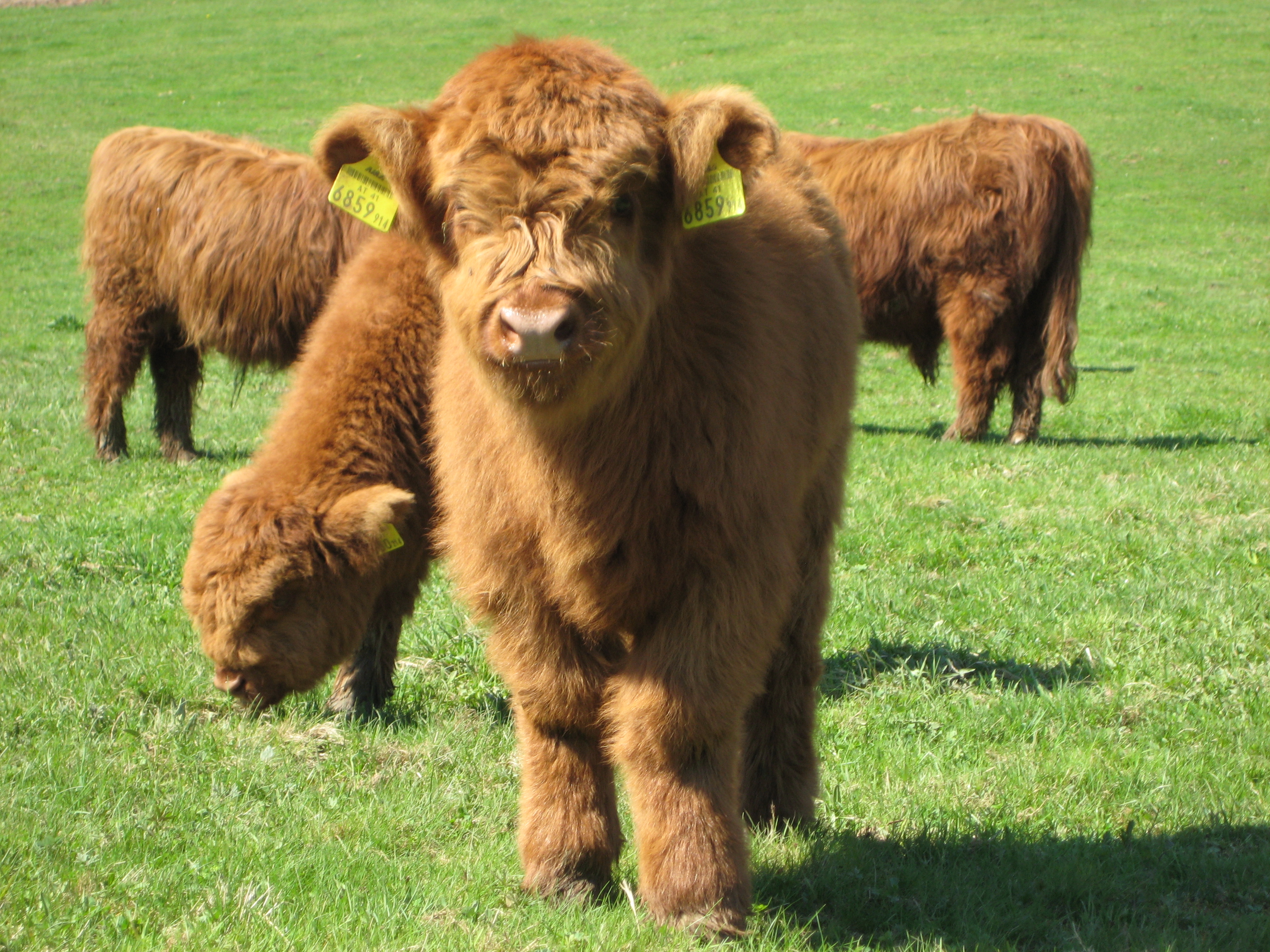

Yellow brindles appear to occur occasionally though. They also postulated another gene that may darken coat colour slightly.īrindle patterns in dilute red animals (yellows and whites) are exceedingly rare and so it appears that the dilution gene may mask these. When researching the gene that dilutes Charolais (D C) to white the authors found a gene at the end of chromosome 28 that appeared to soften any colour even further (makes a red animal light red, nearly yellow for example) and this may well be present in Highlands and could explain some of those 'in between cattle'. This may be possible in Highlands and I would be interested to hear about any of these calves as well. A white animal from a red or black parent suggests that there may be some other gene related to white as has been shown in other species. On a small number tested, the Bus Dubh pattern (black muzzle ring) appears to only show up on e/e animals, although the location of the Bus Dubh gene has not been uncovered.Īt the moment, all white animals have been D H/ D H on DNA tests performed, and so must have received a dilution gene from each parent (that is neither parent could be red or black). The 'wild type' (E +) gene is required to show up the brindle colouring when the brindle gene (A br) is present on the A locus. In some 'wild type' animals (only bulls that we are aware of), there will be some quite obvious black hairs stippled around the face and down the neck and legs. Historically Highland cattle were bred for beef, high milk production, and docility as draught.

Red animals can be red (e/e) or 'wild type' (E +/E +, or E +/e) but they all look the same. Highland cattle are recognized today as a beef producing breed.
Highland cattle colors verification#
I have only had the opportunity to follow one of these up thus far, and sadly discovered that the suggested sire was not the sire (on DNA parentage verification tests) – someone jumped the fence! Although the classic image of a Highland cow today is red they also come in other shades including yellow, brindle, dun, white and also black, the breed's original colour. If anyone has any of these such black calves born, I would love to follow them up.

There appears to be a higher prevalence of black offspring from brindle parents. The only way this could happen is if there was another gene for black somewhere that was recessive – and this may be possible but hasn't been detected in DNA tests so far. Therefore a black (or dun or silver dun) animal can not come from two red parents (or yellow or white). 2) American Highland Cattle have a very unique. For a calf to be black (or dun or silver dun), one of it's parents must have given it the black E D gene, and so must have been black (or dun or silver dun) themselves. 1) Both male and female Highland Cattle have long and powerful horns, widely known at the ranch as sabers. This means that for an animal to be black, it must have one (or possibly two) of these E D genes. Black (E D) is dominant as in black Angus. This has been known about for some years and accounts for the 2 basic colours – red and black.


 0 kommentar(er)
0 kommentar(er)
